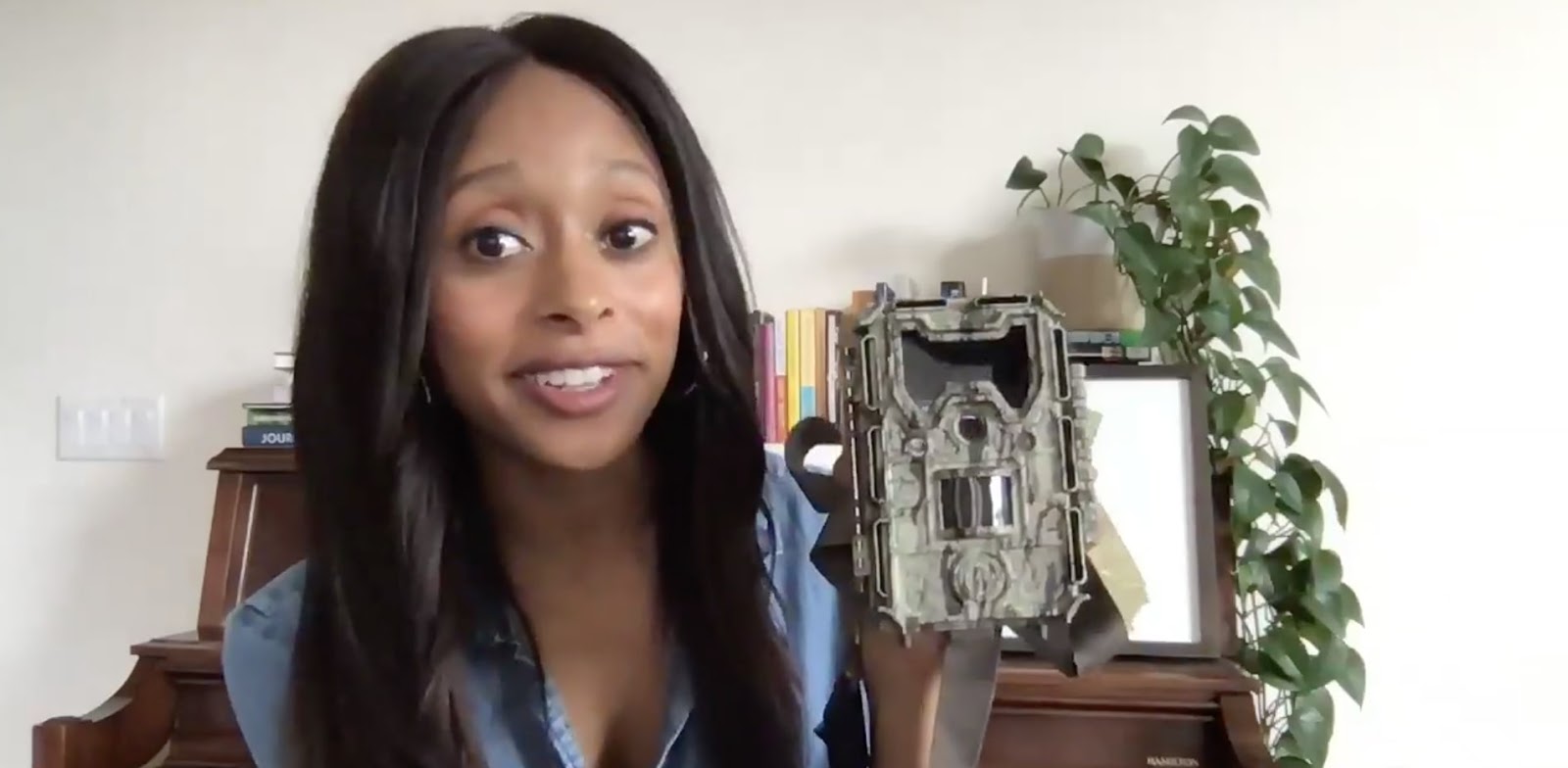National Geographic Carnivore Ecologist Dr. Rae Wynn-Grant Shares Her Love of Bears With Fans
National Geographic Live wrapped up their Backstage virtual speaker series today with a live Q&A with carnivore ecologist Dr. Rae Wynn-Grant from her home in Washington, D.C. near National Geographic headquarters. This was her first season with Nat Geo Live and she shared some great information about animal research and baby bear cubs.
Dr. Rae Wynn-Grant started her presentation by explaining what an ecologist does. An ecologist studies how animals use their surroundings and she specifically focuses on carnivores. Bears are her main focus and she explained that they don’t just eat meat, but they are taxonomically defined as carnivores because they hunt other animals. “Whether we’re talking about tigers in a place like India or sharks, there’s something similar about large animals that hunt their prey… A lot of the world’s large carnivores are either endangered or critically endangered, so many of them are on the brink of extinction,” she shared.
“It’s rare that I go through a public talk without someone asking me if I’ve ever had a public encounter with a carnivore,” Dr. Rae Wynn-Grant explained before the question was asked. She’s had a few dangerous encounters with lions and bears where she felt like her life was at risk. “Every time something scary has happened to me, it’s been because I did something wrong,” she added. She usually travels with essential equipment for the job like bear spray, a flashlight, and protective gear. Her two scary moments came when she wasn’t following best practices in the field.
“I grew up in urban settings so I had a wonderful family that did tons of travel, but I really spent most of my time in big cities,” she explained about her San Francisco upbringing. Her parents didn’t camp or fish, but she loved getting dirty as a kid making mud pies. “I did get my hands dirty enough to feel like I was interacting with nature.” For any kids who feel like a career with animals isn’t in their future, just look at Dr. Rae Wynn-Grant. “You don’t have to be the type of person who grew up foraging in the wild for berries to become a wildlife professional.”
One of the items shared during her presentation was a carved hippo, which she brought back from a life-changing semester abroad in Kenya studying wildlife management. It was her first time camping and it caused her to change her major. The reason the hippo was significant to the bigger topic of carnivore ecology is that hippos are actually herbivores, but they’re among the most violent animals in the world.
Dr. Rae Wynn-Grant has been studying bears for over a decade and dove into her research, becoming an expert before she ever saw a bear in the wild. One of the reasons bears are so unique is that they live in many ecosystems, from forests to deserts to mountains and beaches. One of the most unique qualities is that some bears will visit the same spots in their area over and over, never venturing outside of familiar territories.
Motion sensing animal camera traps are an important part of her research and data collection. “These are fantastic because I can just strap it to a tree, walk away for a couple of days, maybe even a week, come back and collect the data card and see what I have.” She uses flagging tape to help her find her gear again in the forest. You might think she’d be disappointed to go through all the files and not find any bear pictures, but it’s actually part of the plan to find areas that bears avoid. The ultimate goal is to find a way for humans to still enjoy being outdoors in these rustic areas without overlapping with areas bears naturally want to be.
Dr. Rae Wynn-Grant was recently featured in the TV Special Born Wild: The Next Generation alongside Ginger Zee from Good Morning America where the two assisted with research on baby bear cubs sleeping in a den. Visits like that are important to make sure the cubs are healthy and will grow up to be big bears that are essential to the ecosystem. She couldn’t share much information, but Dr. Rae Wynn-Grant is currently part of a proposal to do DNA testing on genetics of grizzly bears in Montana and she added that this would be non-invasive, with a clump of hair left behind giving them enough data to use.
This was another fun look behind-the-scenes with a National Geographic Explorer. While I’m sad to see the virtual event series end, I’m also happy because the world is starting to get moving again and someday soon National Geographic’s Live event series can continue with in-person presentations. Until then, you can relive the exciting adventures in our coverage of past events.
More National Geographic Live Event Coverage
- National Geographic Egyptologist Kara Cooney Talks About Ancient Queens and Pandemics During Virtual Event
- National Geographic Wildlife Filmmaker Bertie Gregory Discusses His Work In Live Virtual Event
- National Geographic Ocean Explorer Brian Skerry Shares Career Highlights in Live Virtual Event
- Wildlife Filmmaker Filipe DeAndrade Shares Three Animals That Represent the Elements During National Geographic Live Event





